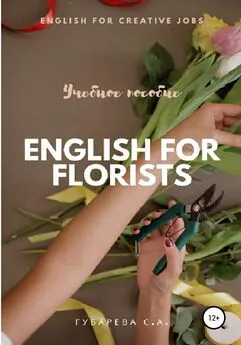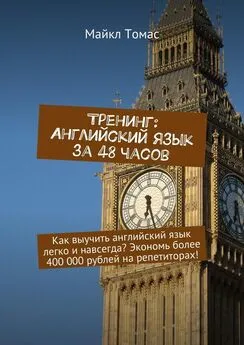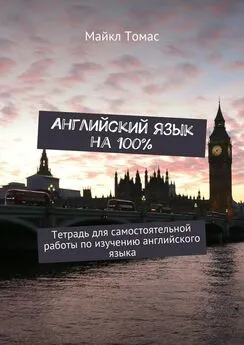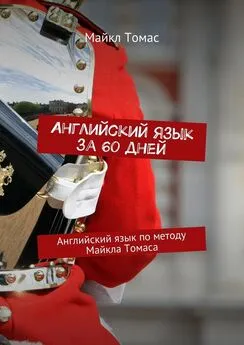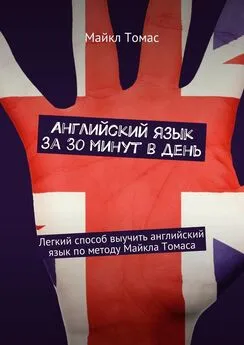Светлана Губарева - Английский язык для флористов
- Название:Английский язык для флористов
- Автор:
- Жанр:
- Издательство:неизвестно
- Год:2021
- ISBN:нет данных
- Рейтинг:
- Избранное:Добавить в избранное
-
Отзывы:
-
Ваша оценка:
Светлана Губарева - Английский язык для флористов краткое содержание
В данном пособии вы познакомитесь со сферой флористики через призму английского языка. Вы сможете различать стили букетов, научитесь составлять резюме, разговаривать с иностранными клиентами и, конечно же, повторите основные грамматические конструкции, которые помогут вам как при собеседовании, так и при оглашении рекомендаций по уходу за купленными цветами.
Английский язык для флористов - читать онлайн бесплатно ознакомительный отрывок
Интервал:
Закладка:

6. Choose any flower from ex. 1 and describe it according to the mind-map with the use of preposition of place and useful phrases:
USEFUL PHRASES
In the picture I can see …
There’s / There are some…
There isn’t a … / There aren’t any …
_____________________________________
_____________________________________
Now you know:
–Anatomy of flower
–Main botanical forms of flowers
–Prepositions of place
–How to describe flowers with the use of there is/ there are
–New words:

Unit 4 Floriography

1. Answer the questions:
What can flowers symbolize?
Which flowers represent love, hope, healing, and good luck?
What do you think “Floriography” means?
Floriography is the term used to represent the language of flowers.
2. Read the first part of the text and decide if the statements a-f are true or false:
The History of Flower Meanings
The symbolic language of flowers has been recognized for centuries in many countries throughout Europe and Asia. They even play a large role in William Shakespeare’s works. Mythologies, folklore, sonnets, and plays of the ancient Greeks, Romans, Egyptians, and Chinese are peppered with flower and plant symbolism—and for good reason. Nearly every sentiment imaginable can be expressed with flowers. The orange blossom, for instance, means purity, and loveliness, while the red chrysanthemum means “I love you.”
Flowery Language of the Victorian Era
Learning the special symbolism of flowers became a popular pastime during the 1800s. Nearly all Victorian homes had, alongside the Bible, guidebooks for deciphering the “language,” although definitions shifted depending on the source.
In the Victorian era, flowers were primarily used to deliver messages that couldn’t be spoken aloud. In a sort of silent dialogue, flowers could be used to answer “yes” or “no” questions. A “yes” answer came in the form of flowers handed over with the right hand; if the left hand was used, the answer was “no.”
Plants could also express aversive feelings, such as the “conceit” of pomegranate or the “bitterness” of aloe. Similarly, if given a rose declaring “devotion” or an apple blossom showing “preference,” one might return to the suitor a yellow carnation to express “disdain.”
How flowers were presented and in what condition were important. If the flowers were given upside down, then the idea being conveyed was the opposite of what was traditionally meant. How the ribbon was tied said something, too: Tied to the left, the flowers’ symbolism applied to the giver, whereas tied to the right, the sentiment was in reference to the recipient. And, of course, a wilted bouquet delivered an obvious message!
More examples of plants and their associated human qualities during the Victorian era include bluebells and kindness, peonies and bashfulness, rosemary and remembrance, and tulips and passion. The meanings and traditions associated with flowers have certainly changed over time, and different cultures assign varying ideas to the same species, but the fascination with “perfumed words” persists just the same.

3. Read the text once again and complete first two columns ( flower and meaning in the Victorian era ) in the table:

4. Think what the flowers from the text symbolize nowadays. Check your ideas and complete the third column of the table from exc. 3:

5. Write the names of flowers from the table in exc.3 under the pictures:
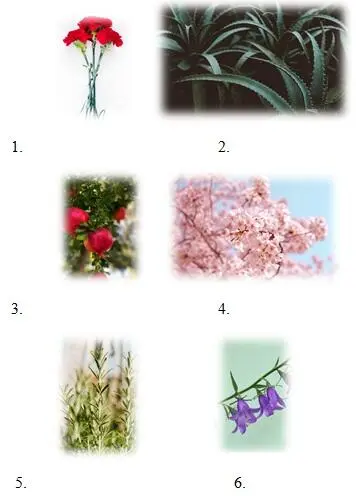
6. Read an abstract from the text above and match the usage of the construction in boldand examples:

7. Study the rules:
Rules
One might return to the suitor a yellow carnation to express “disdain.”(reason)
Watering plants is essential. (subject)

8. Open the brackets by choosing correct answers in the following sentences:
a)
I love ________(to see/seeing) so many florists getting around this and sharing ideas on ways we can limit it in our work.
b)
Lilac and the Cat avoids ________(using/to use) cellophane, floral foam, ribbons or any unnatural elements in its designs.
c)
She needs_______(to buy/buying) a new pink ribbon today.
d)
They also specialize in “interior greening”, which harnesses the power of plants _________(reducing/to reduce) indoor toxins.
e)
WildFlora’s team is made up of young women with backgrounds in dance, creative _______(to write/writing) and photography.
f)
She was happy ________(seeing/to see) how many fresh daisies there are in our shop.
g)
This company says it’s on a mission “_________(to bring/bringing) forth geographically and environmentally inspired solutions and products that are ecologically responsible.
9. Read the second part of the text and decide which flowers you would give in concrete situations written under the text using phrases for expressing opinions:
Flower Meanings by Color
Flowers provided an incredibly nuanced form of communication. Some plants, including roses, poppies, and lilies, could express a wide range of emotions based on their color alone.

Take, for instance, all of the different meanings attributed to variously colored carnations: Pink meant “I’ll never forget you”; red said “my heart aches for you”; purple conveyed capriciousness; white was for the “the sweet and lovely”; and yellow expressed romantic rejection.
Likewise, a white violet meant “innocence,” while a purple violet said that the bouquet giver’s “thoughts were occupied with love.” A red rose was used to openly express feelings of love, while a red tulip was a confession of love. The calla lily was interpreted to mean “magnificent beauty,” and a clover said “think of me.”
Unsurprisingly, the color of the rose plays a huge role. Red roses symbolize love and desire, but roses come in a variety of colors and each has their own meaning.
White rose: purity, innocence, reverence, a new beginning, a fresh start.
Red rose: love, I love you
Deep, dark crimson rose: mourning
Pink rose: grace, happiness, gentleness
Yellow rose: jealousy, infidelity
Orange rose: desire and enthusiasm
Lavender rose: love at first sight
Coral rose: friendship, modesty, sympathy
Situation 1: A man saw a beautiful woman on the street and immediately fell in love with her. He wants to show her his feelings.
Situation 2: A girl has a boyfriend who needs to go to an army. She wants him not to forget her during the year there.
Situation 3: One old man has a tragic moment in his life and now he is on his way to the funeral. Before he get there he will buy some flowers.
Situation 4: A shop assistant saw a wonderful pretty woman who was buying some dresses. He wants to say to her that she looks amazing giving her some flowers from the nearest florist shop.
USEFUL PHRASES
In my opinion, …
To my mind, …
As far as I am concerned, …
From my point of view, …
As for me / As to me, …
I would say that …
It seems to me that …
I think/ consider/ find/ feel/ believe/ suppose/ assume that …
10. Study the info graphics and express your opinion about people’s choice of flowers using the phrases from exc. 9. Provide examples to prove your point of view using names of flowers:
Floriography and Flower Gifting
Before you select a bouquet, pay attention to the meaning behind the type and color of blooms you select. Each of the flower is assigned with a specific meaning, which you may consider when you are giving flowers as a gift. Mix your own bouquet and have fun creating your own hidden messages! And remember, flowers can talk. When words fail you, you can still rely on the floriography to express your feelings.
Name of flowers:

The colour of a flower can evoke special meaning to its story. 29% of people choose bouquets based on their colour:

11. Answer the questions:
Do you believe in horoscopes? Why?
What is your star sign?
Why do you think some people like buying flowers according to the zodiacs?
12. Look at the Meanings of Flower Zodiac Signs and match star signs, personality adjectives and flowers:
Aries Flowers
Birth Date:MARCH 21 – APRIL 20
Birthday Flower: Honeysuckle
If you are born under the sign of the honeysuckle you are sweet to the senses of others. Meaning, you naturally entice others with your charm and grace. You have a smooth confidence that attracts a wide variety of friends and business partners. Just as bees can’t resist the lure of the honeysuckle – people can’t resist your energy. You are the first of the flower signs and so you are assertive and a natural leader of the vine. Honeysuckle people are strong and determined, weaving their way through any challenge, and are quite deft at finding innovative solutions.
Taurus Flowers
Birth Date:APRIL 21 – MAY 21
Birthday Flower:Poppy
If you are a poppy among the zodiac flower signs you love the finer things in life, and you love to share them with other people. You have a flare for design, a good eye for detail, and a knack for putting things together with style. Refinery comes natural to you, and you have a classy way about you that others find alluring. Poppy people are about pleasure: giving and receiving it. You enjoy security and comfort. Those with the flower sign of the poppy are very resilient too, and can weather any storm because of their patience and headstrong nature.
Читать дальшеИнтервал:
Закладка:
